The kokopelli tattoo meaning holds a magnetic allure for those seeking a tattoo design imbued with cultural significance and artistic flair. Embarking on a journey to understand the depth behind this ancient symbol and its representation in tattoo art opens a gateway to the realms of Native American folklore, spirituality, and aesthetics. In this comprehensive guide, we will delve into the rich tapestry of kokopelli symbolism, explore its various interpretations, and unravel the enigmatic charm that has captivated tattoo enthusiasts worldwide.
Kokopelli Tattoo: An Iconic Symbol of the Southwest
Before immersing ourselves in the world of kokopelli tattoos, let’s acquaint ourselves with the fascinating origins and essence of this iconic figure. Kokopelli is a figure deeply rooted in Native American culture, particularly prevalent among the tribes of the Southwest region of the United States. Depicted as a humpbacked flute player, often shown with a prominent phallus, kokopelli embodies multiple facets of life, including fertility, music, storytelling, and mischief.
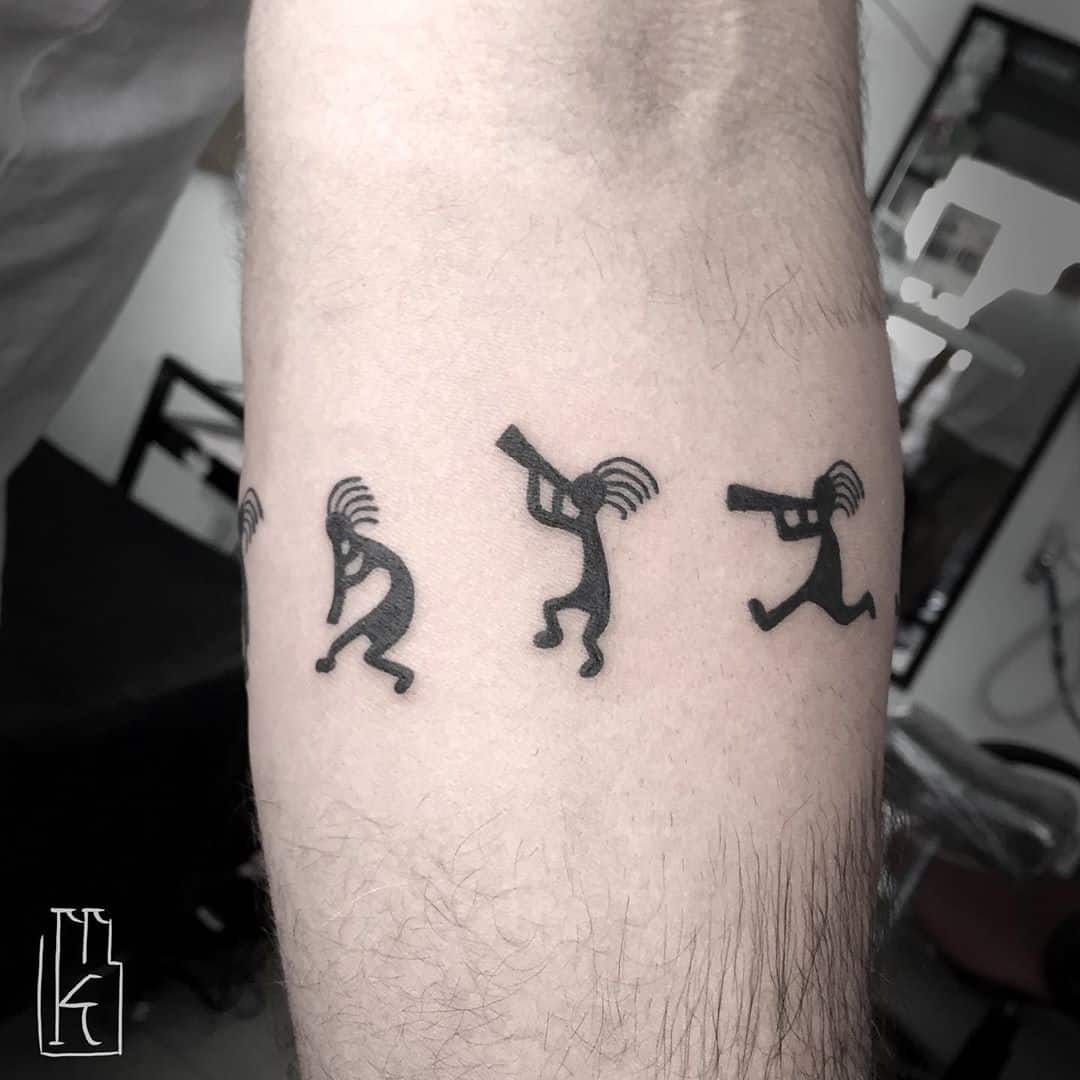
As an itinerant minstrel, kokopelli roamed the land, enchanting people with his flute melodies and spreading joy wherever he went. His charismatic presence intertwined with the everyday lives of Native Americans, becoming an emblematic representation of harmony between humans, nature, and the spiritual realm.
The Kokopelli Tattoo Meaning: Exploring the Symbolism
Fertility and Life’s Abundance
The kokopelli tattoo is a powerful symbol that carries deep cultural and spiritual meanings. It originates from Native American folklore, particularly from the Southwestern United States and various indigenous tribes such as the Hopi, Zuni, and Pueblo people. The tattoo design typically depicts a humpbacked figure playing a flute with an elongated body.
One of the primary interpretations of the kokopelli tattoo is its association with fertility and the abundance of life. In many tribal traditions, the figure of kokopelli is believed to be a fertility deity or a spirit of fertility. The distinctive humpbacked posture signifies a pregnant belly, representing the potential for new life and creation. By choosing a kokopelli tattoo, individuals can symbolically express their desire for fertility, both in terms of physical procreation and creativity in various aspects of life.
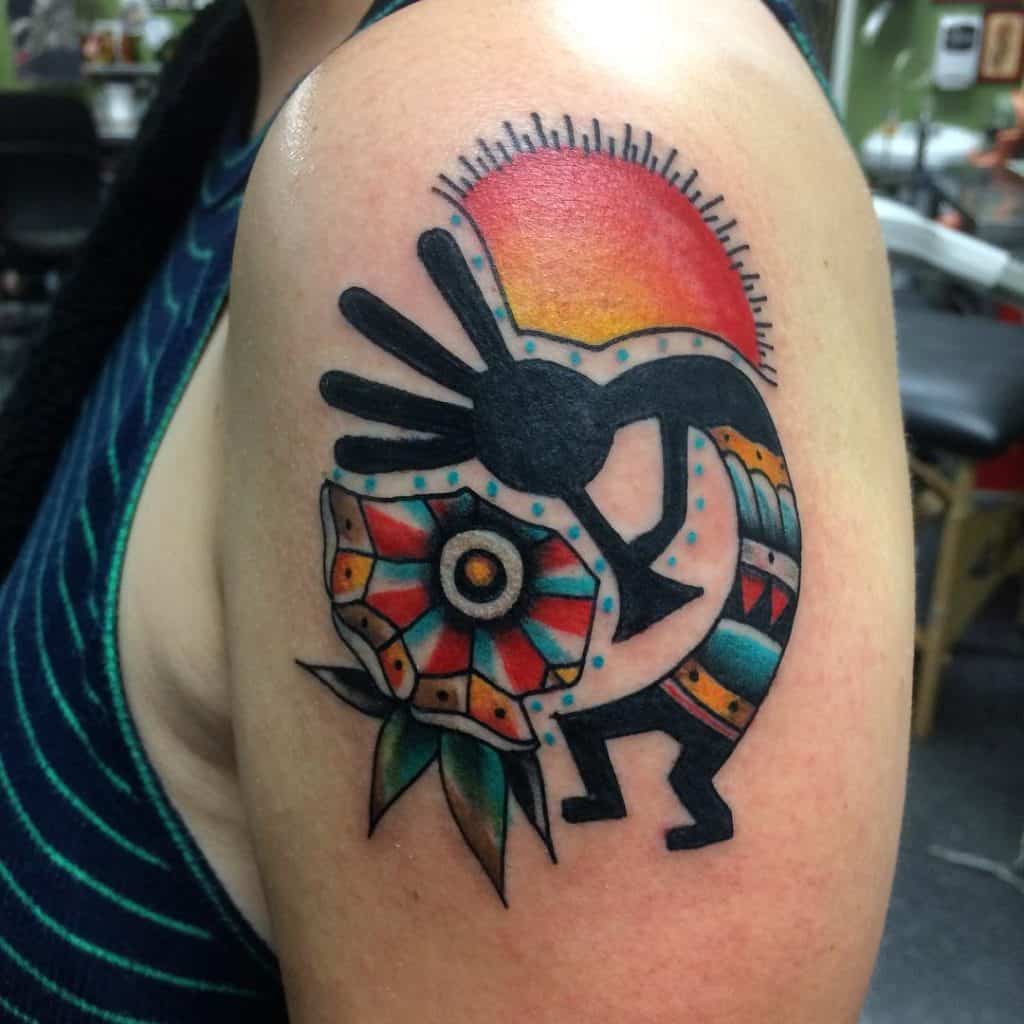
Furthermore, the kokopelli tattoos are often connected to agricultural bounties and the cycle of birth and rebirth. In Native American cultures, agriculture plays a vital role, and the success of crops is seen as essential for sustaining life. Kokopelli is regarded as a bringer of rain, fertilizing the earth with his music, and ensuring plentiful harvests. By embodying this symbol through a tattoo, people can pay homage to the interconnectedness between nature, agriculture, and human existence. It serves as a reminder of the cyclical nature of life and the importance of nurturing and maintaining balance within the ecosystem.
The elongated flute held by the kokopelli further emphasizes the concept of life’s perpetual rhythm. Music is often associated with celebration, joy, and harmony—elements that are integral to the kokopelli’s symbolism. The rhythmic sound of the flute represents the eternal flow of life, connecting all living beings and celebrating the beauty and vitality found within existence. Through a kokopelli tattoo, individuals can express their appreciation for the interconnectedness of life and the profound connection between humanity and nature.
Musicality and Expression: Harmonizing Body and Soul
Kokopelli tattoos hold symbolic significance as they represent the divine musician, Kokopelli, who is deeply rooted in Native American mythology and folklore. Kokopelli is believed to be a spiritual being or deity associated with fertility, agriculture, and music. In Native American cultures, he is often depicted as a humpbacked flute player, symbolizing the power of melodies to unite people and foster spiritual connections.
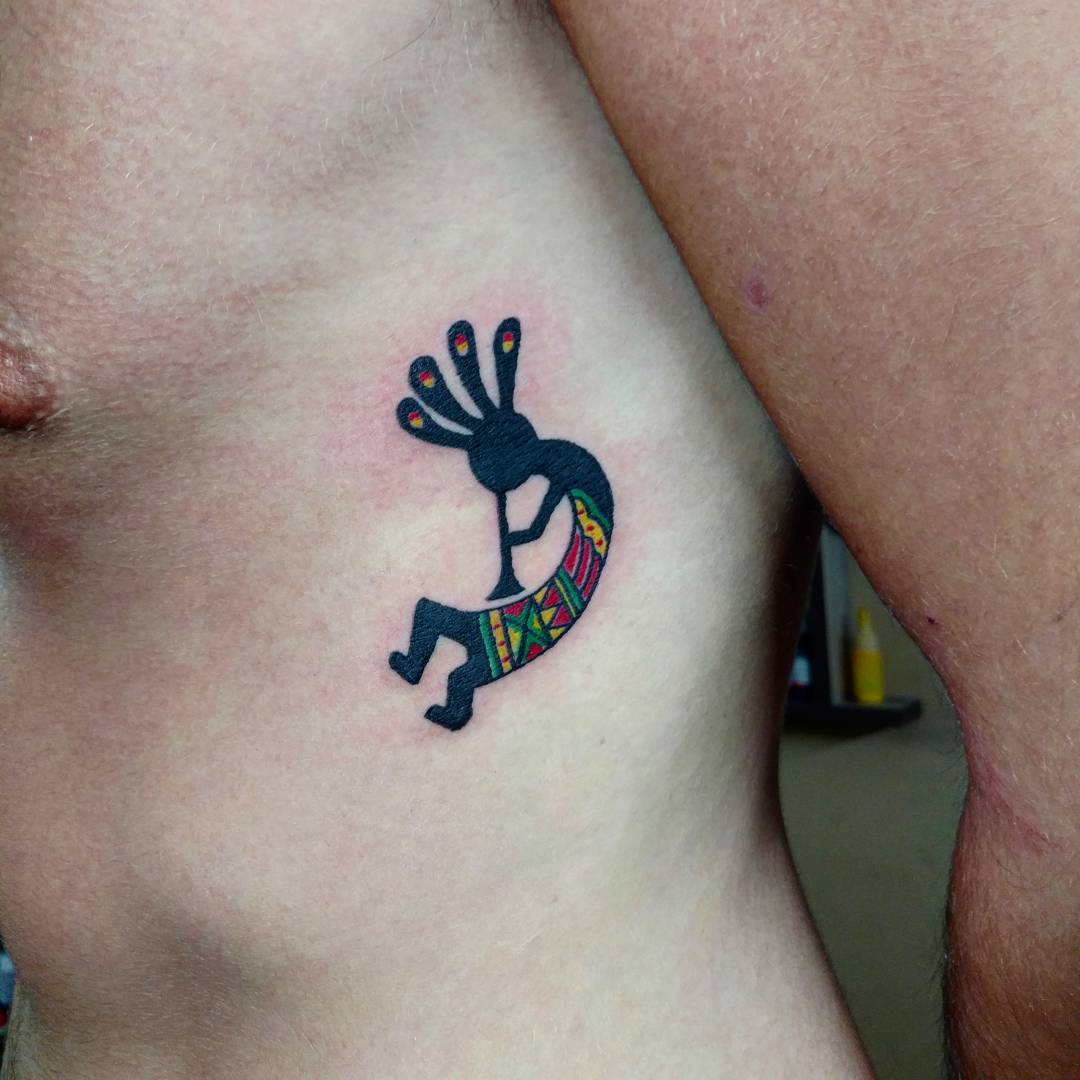
By choosing to adorn oneself with a kokopelli tattoo, individuals can express their passion for music and celebrate their own musical talents. The tattoo serves as a visual representation of their personal connection to the harmonious and transformative nature of music. It can be seen as an homage to the profound impact that music has on our lives, capturing the joy, beauty, and emotional depth it brings.
Moreover, a kokopelli tattoo can also serve as a means to seek harmony between one’s body, soul, and the world around them. Just as Kokopelli’s flute playing is believed to bring about fertility and abundance in nature, the tattoo can be seen as a way to invoke those qualities within oneself. It represents a desire for spiritual alignment, a longing to be attuned to the rhythms of life and to find balance within the chaotic world we live in.
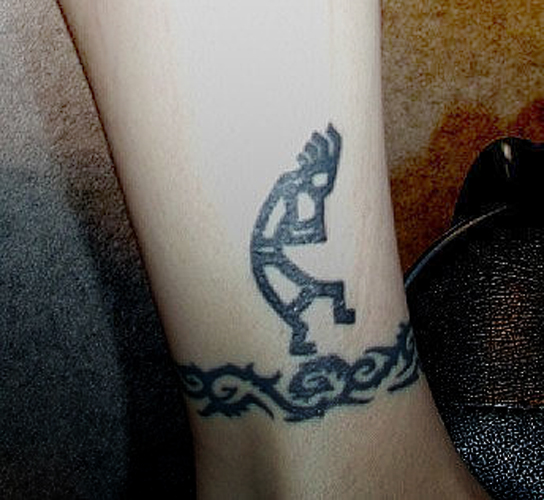
The choice to get a kokopelli tattoo may also reflect a connection to Native American spirituality and a respect for indigenous cultures. It is essential, however, to approach these symbols with cultural sensitivity and awareness of their origins. Respecting the cultural context and history behind such symbols is crucial to avoid appropriating or misrepresenting Native American traditions.
Spiritual Journey and Transformation: Embracing Transcendence
A Kokopelli tattoo is a symbol rich in cultural and spiritual significance. It originates from the Native American tribes of the Southwestern United States, particularly the Hopi, Zuni, and Pueblo peoples. The Kokopelli figure is often depicted as a humpbacked flute player, characterized by its distinctive elongated body, flute, and curving lines that represent its movement.
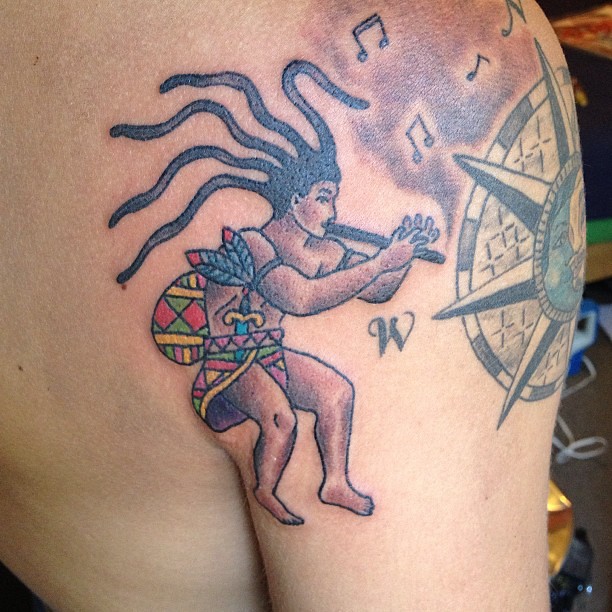
The Kokopelli embodies various meanings across different tribal traditions, but it is commonly associated with fertility, music, joy, and the spirit of the Southwest. Beyond these surface-level interpretations, a Kokopelli tattoo can hold a deeper significance as a reminder to embrace the transformative power within oneself and embark on a path of spiritual evolution.
The symbolism behind the Kokopelli tattoo lies in its association with music, fertility, and the cycles of life. The flute played by the Kokopelli is believed to bring about abundance, both in terms of physical fertility and the fertility of ideas and creativity. This symbolism extends beyond literal procreation to encompass personal growth, artistic expression, and inner transformation.

The humpbacked posture of the Kokopelli is often interpreted as a depiction of the weight of human burdens or the challenges encountered along the spiritual journey. However, despite these obstacles, the Kokopelli’s eternal dance and joyful demeanor remind us to persevere and find happiness amidst the trials we face.
By choosing to adorn oneself with a Kokopelli tattoo, an individual may seek to reinforce their commitment to embracing personal growth and spiritual development. This tattoo serves as a constant reminder to tap into one’s inner power, overcome obstacles, and embrace the transformative potential residing within.
The Kokopelli’s association with nature further reinforces its spiritual essence. In Native American cultures, the natural world holds profound wisdom and guidance for those who are attuned to it. The Kokopelli’s connection to the earth, sky, and elements signifies a harmonious relationship with the environment and a deep reverence for nature’s rhythms.
The Kokopelli tattoo can also serve as a tribute to the rich cultural heritage of the Native American tribes. It acknowledges their wisdom, traditions, and profound spiritual understanding. Through this tattoo, one can honor and respect the interconnectedness of all beings, while embracing the universal themes of growth, transformation, and self-realization that the Kokopelli embodies.
Connection with Native American Heritage: Honoring Ancestral Roots
A Kokopelli tattoo is a powerful symbol that holds deep significance for individuals who choose to adorn their skin with it. This tattoo design represents a profound connection to ancestral roots and serves as a tribute to the wisdom, traditions, and resilience of Native American tribes.
Kokopelli is a well-known figure in Native American folklore and mythology, particularly in the southwestern United States. Often depicted as a humpbacked flute player, Kokopelli embodies various meanings across different tribes. He is commonly associated with fertility, music, dance, and storytelling. Additionally, Kokopelli is seen as a symbol of abundance, prosperity, and good fortune.
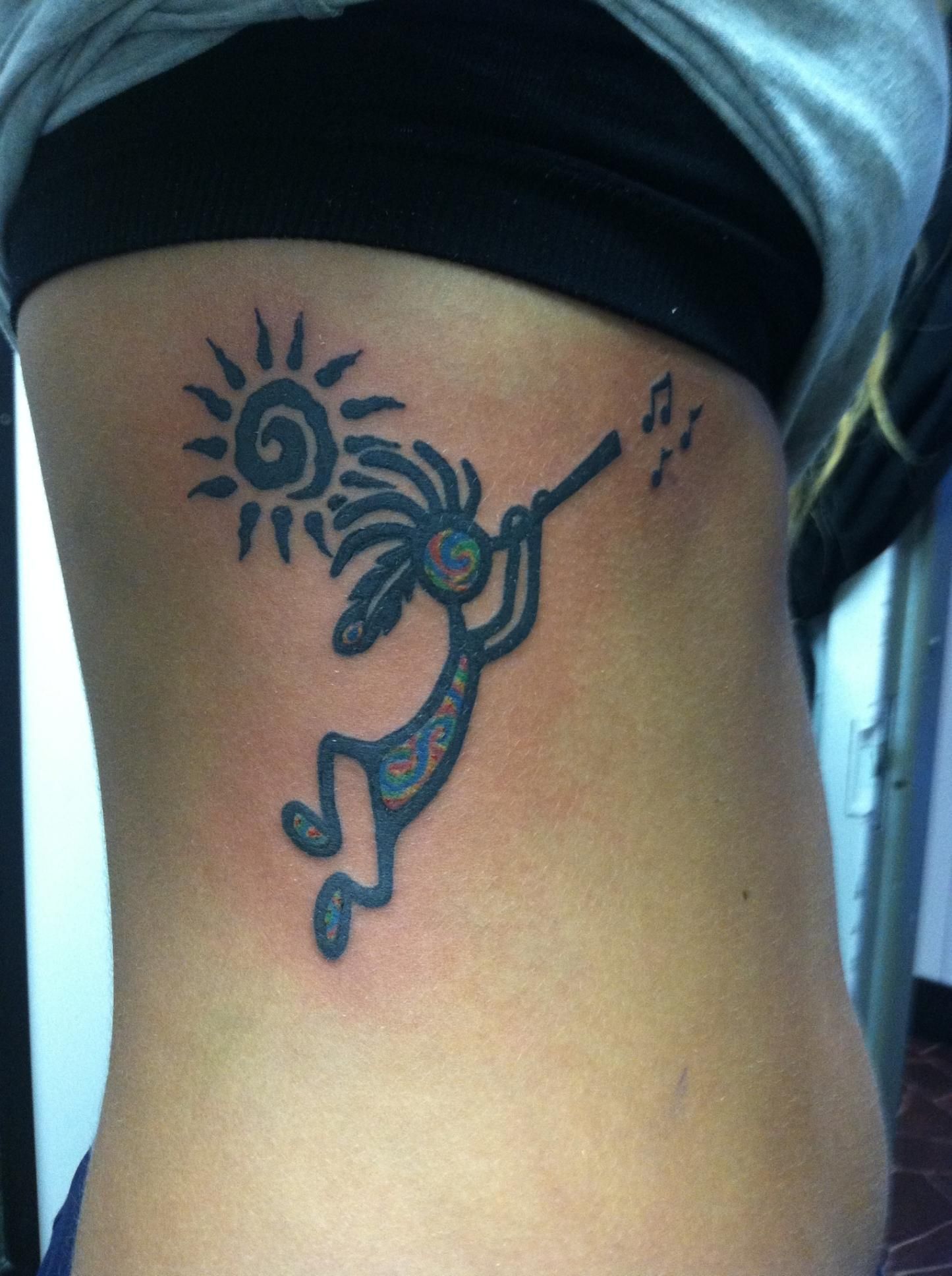
By choosing to etch this image onto their skin, individuals proudly showcase their respect for the rich tapestry of Native American history and culture. The tattoo serves as a visual reminder of the enduring strength and enduring spirit of these indigenous communities. It signifies a desire to honor and preserve the cultural heritage passed down through generations.
Wearing a Kokopelli tattoo can also be seen as a way to establish a personal connection with one’s own ancestral lineage. It represents a conscious effort to stay connected to one’s roots and embrace the traditions and values of Native American cultures. This symbolic gesture reflects an individual’s desire to carry forward the knowledge and lessons learned from their ancestors.
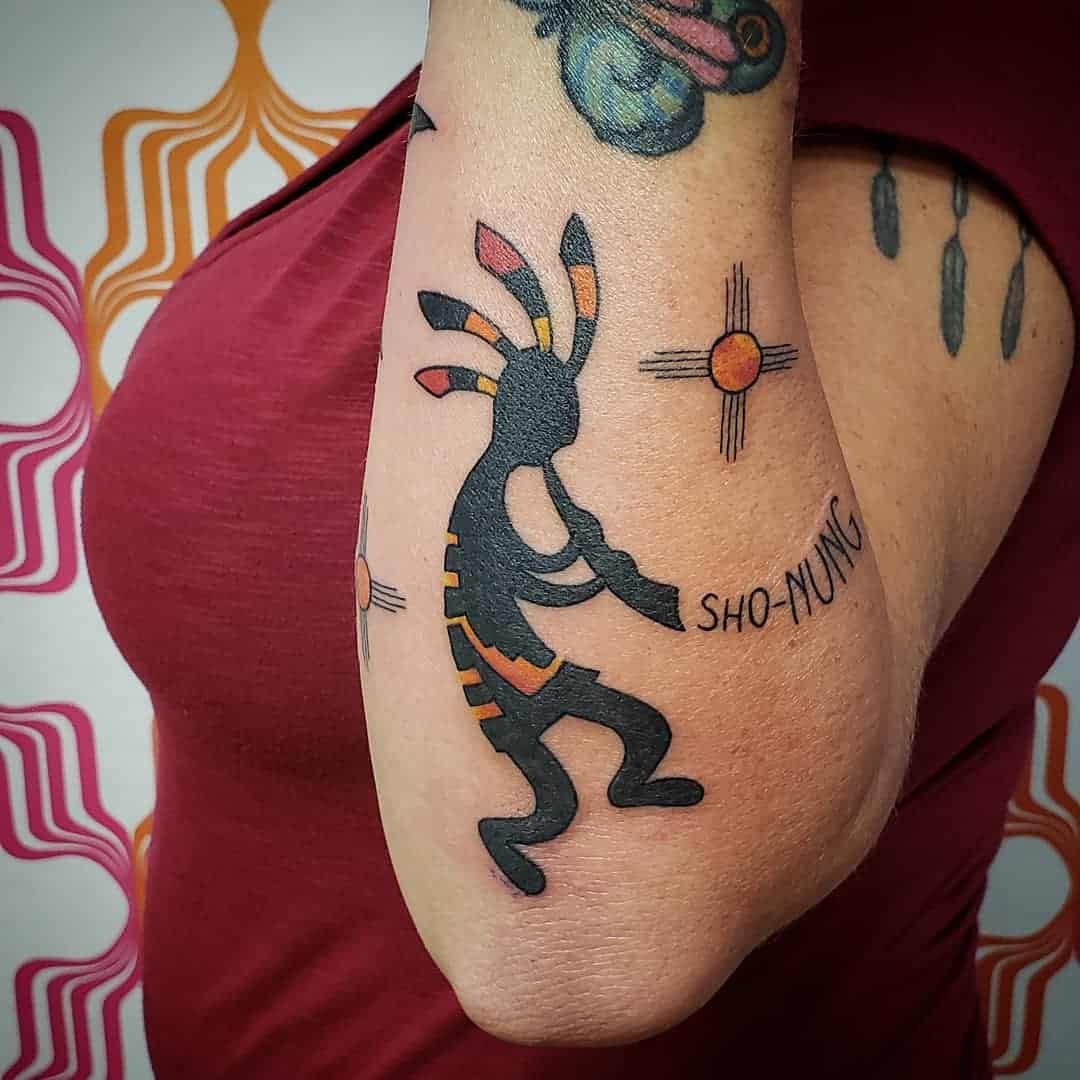
Furthermore, the Kokopelli tattoo can serve as a form of self-expression and identity. It allows bearers to proudly display their appreciation for the beauty and complexity of Native American art and symbolism. It is a visual statement that acknowledges the influence and impact of Native American cultures on contemporary society.
It is important to note that while many individuals may choose to get a Kokopelli tattoo with sincere respect and admiration for Native American cultures, cultural appropriation and misrepresentation are significant concerns. Native American symbols and imagery hold sacred meaning within their respective communities, and it is essential to approach such tattoos with proper understanding, sensitivity, and respect. Engaging in meaningful conversations with members of the Native American community and seeking their guidance can help ensure that the tattoo is approached in a culturally sensitive manner.
Celebrating Playfulness and Joy: Embracing Life’s Lighter Side
A Kokopelli tattoo is a design featuring the iconic figure of Kokopelli, a mythical character commonly found in Native American folklore. The image of Kokopelli is often represented as a humpbacked flute player, usually depicted dancing or playing his flute. This tattoo design holds significant symbolism and meaning, representing various aspects of life and human nature.
Kokopelli is associated with joy, fertility, and abundance. Those who choose to get a Kokopelli tattoo often do so to embrace the lighthearted aspects of life, seeking to invite laughter, spontaneity, and a childlike wonder into their world. It symbolizes an attitude of playfulness, free-spiritedness, and a celebration of life’s pleasures.
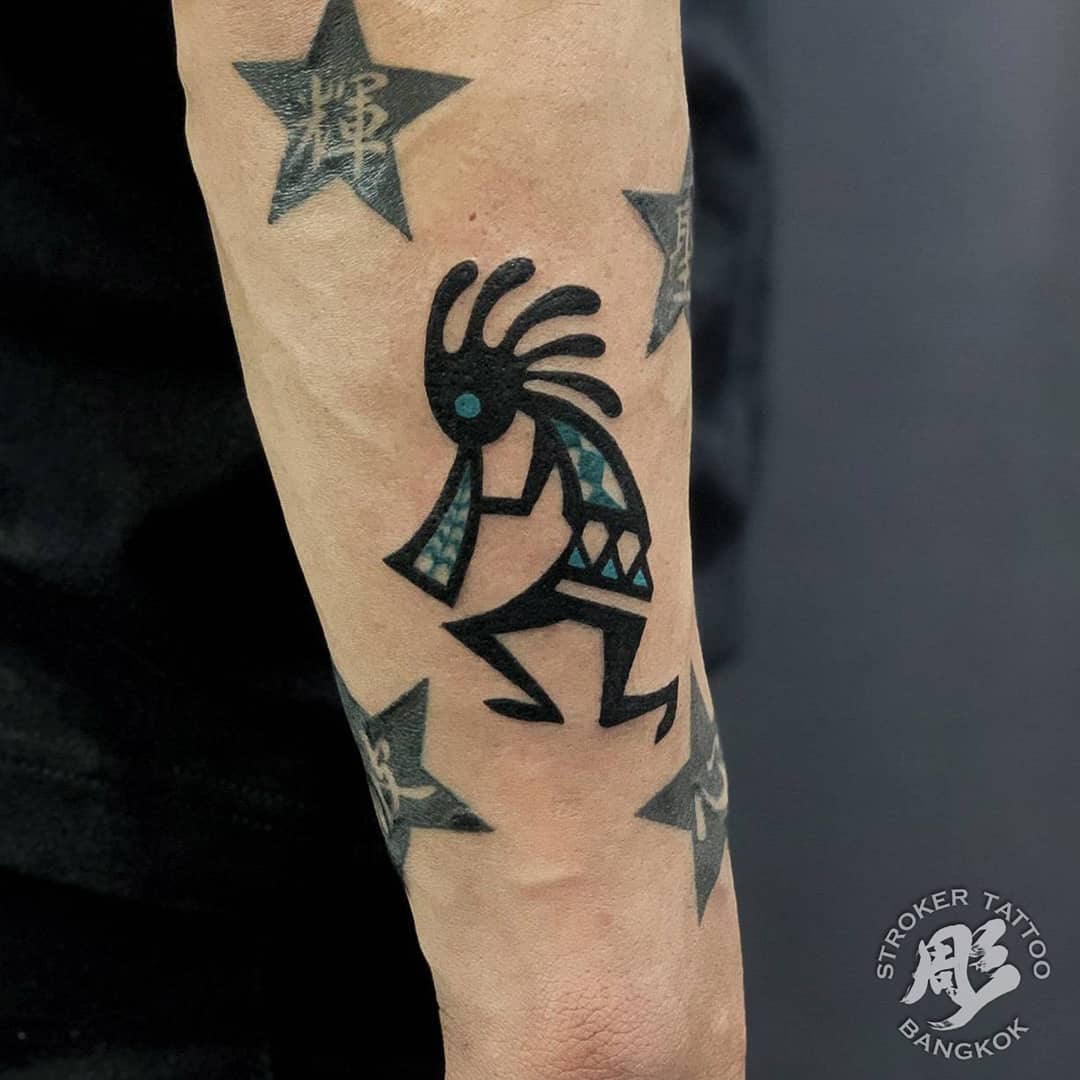
The flute played by Kokopelli is said to bring happiness and good fortune. By incorporating this element into the tattoo design, individuals aim to attract positivity and create a harmonious existence. The music flowing from the flute represents the power of creativity and self-expression, encouraging the wearer to live authentically and explore their artistic side.
Additionally, Kokopelli is often linked to fertility and the cycle of life. The hump on his back is believed to represent a sack filled with seeds, symbolizing growth, abundance, and the potential for new beginnings. Therefore, individuals may choose to get a Kokopelli tattoo as a tribute to their desire for personal growth, embracing opportunities for transformation and renewal in their lives.
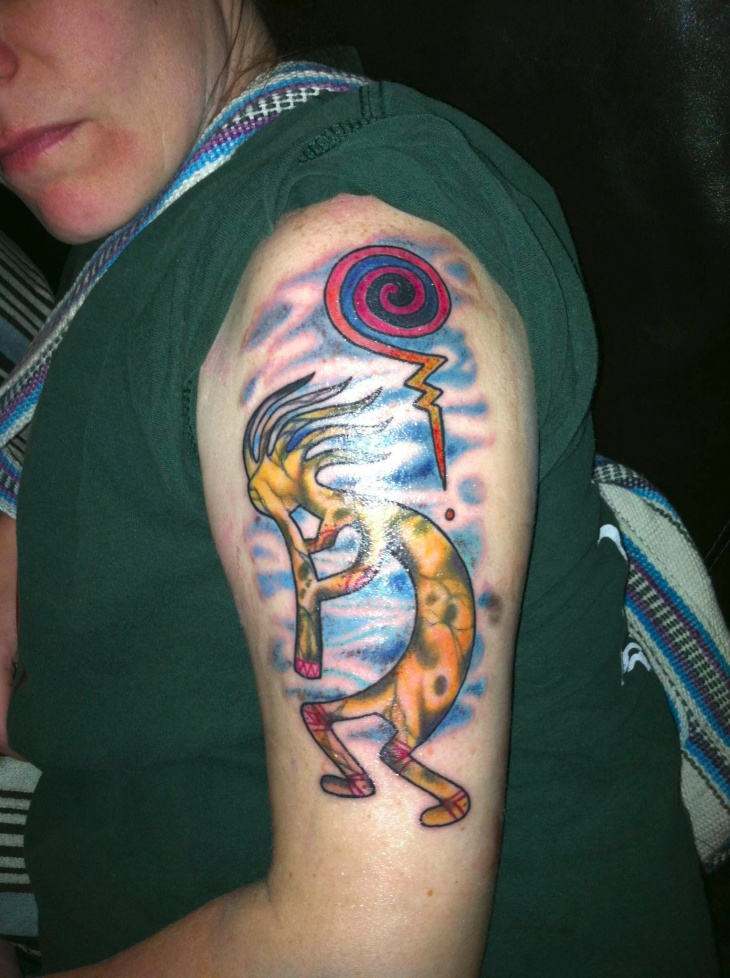
Moreover, the presence of Kokopelli in Native American cultures reflects a connection to nature and the spiritual realm. The figure is associated with rain, which is essential for agriculture and sustaining life in arid regions. The tattoo can serve as a reminder to stay connected with nature, respect the environment, and honor one’s spiritual beliefs.
In summary, a Kokopelli tattoo represents the light-hearted aspects of life and encourages individuals to embrace joy, laughter, spontaneity, and childlike wonder. It symbolizes a celebration of life’s pleasures, creativity, fertility, personal growth, and a connection to nature and spirituality. By adorning themselves with this tattoo, individuals express their desire to live a vibrant and fulfilled existence, inviting positivity and abundance into their world.
Conclusion
The allure of kokopelli tattoos lies not only in their aesthetic appeal but also in the rich symbolism they carry. As we’ve explored in this in-depth article, the kokopelli embodies concepts of fertility, music, spirituality, ancestral roots, and joy. By getting a kokopelli tattoo, individuals can celebrate these aspects of life, express their connection to Native American heritage, and embark on a personal journey of self-discovery and transformation.
However, it’s important to approach kokopelli tattoos with cultural sensitivity, respecting the symbol’s origins and honoring Native American traditions. By doing so, we can ensure that these tattoos serve as meaningful expressions of the beauty, depth, and spiritual significance embodied by the captivating kokopelli.

I am Harvey Berry, a tattoo enthusiast who has immersed himself in the diverse world of ink, passionately exploring the beauty and artistry within each tattoo. My mission extends beyond uncovering the aesthetics of tattooing; it involves sharing in-depth knowledge across all aspects of this art form.
Fueled by genuine curiosity and love for every facet of tattooing, I have diligently crafted well-researched articles, with a special focus on the Tattoo Meaning of Impeccable Nest section. Here, my aim is to help the tattoo community gain a deeper understanding of the meanings and values embedded in each tattoo.
One of my primary goals is to encourage responsible decision-making when it comes to getting inked. I recognize that choosing to get a tattoo is a significant personal decision that requires careful consideration. Hence, I provide diverse resources covering the meaning of tattoos, the tattooing process, aftercare tips, and other valuable information.
Whether you are a seasoned tattoo enthusiast or embarking on your first exploration of the world of body art, I aspire to be a reliable resource for you at every step of your journey. I hope that my extensive knowledge of tattoos, especially in the Tattoo Meaning section, will assist you in finding inspiration to express yourself through the art of tattoos.
